Director's Report
Dear fellow conservationists,
For this upcoming holiday season, I wish you happiness and the hope that you seize a moment of gratitude for the natural beauty nearby. Likewise, for those who have given of themselves in a myriad of ways to protect nature, please take a moment of stillness to pat yourselves on the back for a job well done.
For this end of year, I leave you with the words of one of the giants of conservation. Sometimes, the best words are those already written:
"Everybody needs beauty as well as bread, places to play in and pray in, where Nature may heal and cheer and give strength to body and soul alike.” — John Muir
Happy New Year,
Ellen
Ellen M. Ferretti
Director, Brandywine Conservancy
Model Forestry/Timber Harvesting Ordinance to Undergo Important Revisions
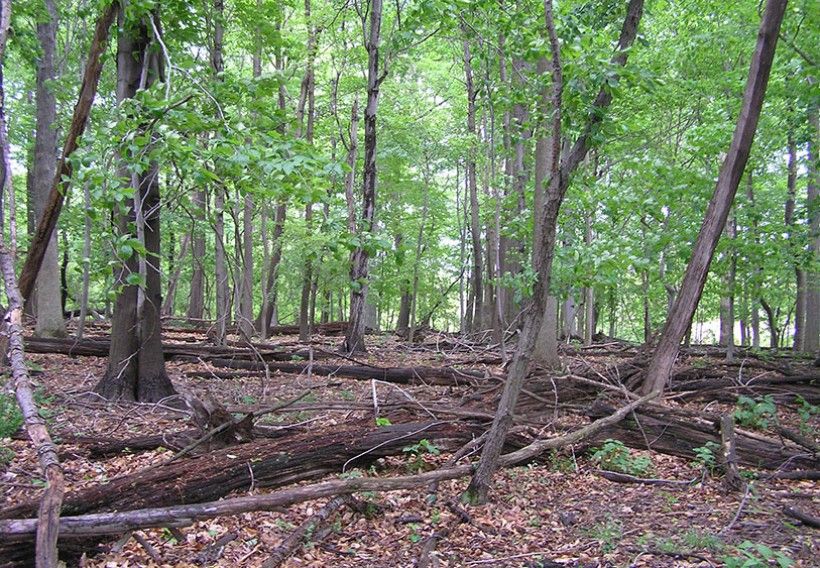
The Municipal Assistance Program’s (MAP) newly released model forestry/timber harvesting provisions for municipal zoning ordinances will soon undergo a few important revisions.
These provisions were drafted by MAP staff in response to formal violation notices issued by Pennsylvania’s Attorney General to a local municipality for excessive regulation of forestry/timber harvesting activities. MAP staff had worked with several local and state forestry stakeholders over two years for forestry/timber harvesting model regulations that would meet municipal needs and survive Attorney General scrutiny. The State Attorney General’s authority in this case comes from Pennsylvania’s Agriculture, Communities and Rural Environment law (ACRE).
After the releases of the 2018 Model Forestry/Timber Harvesting Ordinance additional stakeholders came forward with pertinent information which we felt needed to be added.
Conservancy staff met with representatives of the Pennsylvania Hardwoods Development Council of the State Department of Agriculture, the Pennsylvania Forest Products Association, faculty from Penn State University, professional foresters from forest products companies operating in the state, and a representative of PA DCNR’s Bureau of Forestry. Guests of the Conservancy included two Chester County municipal representatives, a staff person of the Chester County Conservation District, the Executive Director of the Chester County Association of Township Officials, and a municipal land use attorney. This meeting yielded a better understanding of the financial and regulatory challenges facing private forest owners and Pennsylvania’s sawmills, as well as gaining input from professional foresters practicing forestry and addressing state and local regulations throughout the state. It also evidenced the need for minor changes in our model ordinance terminology, permit approval procedures, and performance standards.
Conservancy staff also met with two private forest owners from the south-central part of the state, who were already involved in providing municipal guidance state-wide on woodland resource protection. One of these forest owners was also a township supervisor and professional planner. They recently published “Sustaining and Improving Pennsylvania’s Forest Land through Comprehensive Plans: The Vital Role of Counties and Municipalities” as a resource for county and municipal policymakers and planning professionals. Discussions with these stakeholders increased our understanding of the challenges facing private forest owners in sustainably managing woodland resources, particularly outside of southeastern Pennsylvania. It also highlighted a unique educational opportunity that exists when municipalities are reviewing forestry/timber harvesting permit applications, benefitting forest owners and municipal officials alike, in achieving the goal of sustaining privately-held forests in Pennsylvania.
As a result of this invaluable input, and in light of MAP’s original goal of developing practical and legally defensible forestry/timber harvesting provisions for this region’s municipal zoning ordinances, MAP staff are now making changes to its model provisions. A revised set of model forestry/timber harvesting provisions will be released in early 2019. In the meantime, questions or comments on forestry/timber harvesting regulations can be directed [email protected].
Annual Holiday Subscribers Meeting!
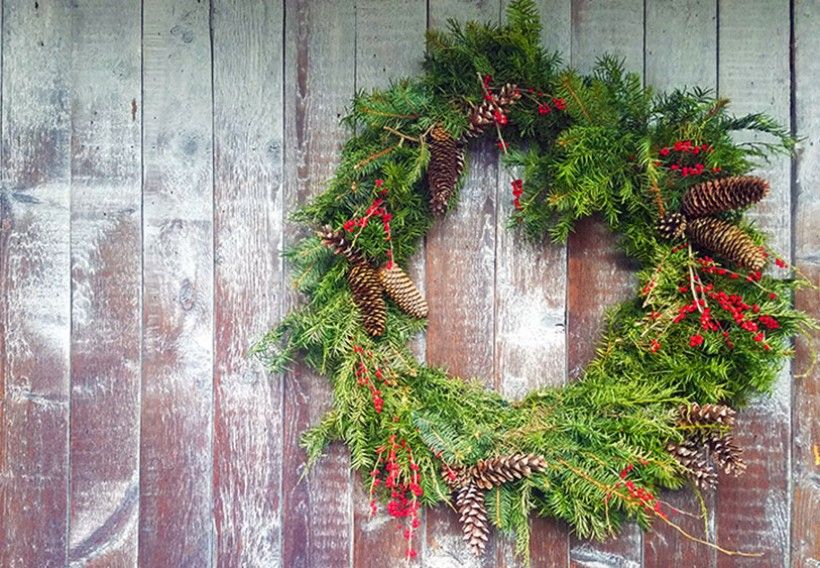
Each December, as a tradition of the Brandywine Conservancy’s Municipal Assistance Subscribers program, subscribing members are invited to the Brandywine River Museum of Art to celebrate the winter holidays and share in some good cheer. This special evening’s agenda typically begins with a short informative program and follows with unlimited access to the Museum’s festively decorated galleries, including traditional holiday exhibits, as well as the Museum gift shop where attendees will receive a modest discount on purchases. A sumptuous selection of holiday food and beverages is also provided to complete the occasion.
This year, our Subscriber Program’s holiday meeting will take place Thursday, December 13, from 6:30 to 9 p.m. for subscribing members and their guests. Doors will open at 6 p.m., although gallery access will only be available after the short program. From 6:30 to 7:30 p.m., attendees will hear a review of the Conservancy’s Municipal Assistance Program activities and accomplishments from John Theilacker, Associate Director, followed by the Birmingham Hill story—a major achievement of the Conservancy’s Brandywine Battlefield preservation efforts—presented by David Shields, Associate Director for the Conservancy’s Land Conservation Program. The program will conclude with our recognition of a few long-time friends of the Conservancy who are transitioning to a more leisure lifestyle.
Subscribers are encouraged to RSVP by December 7 to Elissa Manuele at the Brandywine Conservancy via [email protected]. Those members who do not receive a formal invitation to this event should also contact Elissa via email.
Upcoming Calendar of Events
Holiday Subscribers Meeting
Thursday, December 13
Hike a Loop Trail at the Laurels Preserve
Sunday, February 3
Hike a Loop Trail at the Laurels Preserve
Sunday, March 3
Brandywine Conservancy Undertaking Municipal Assessments of Green Stormwater Infrastructure Regulations
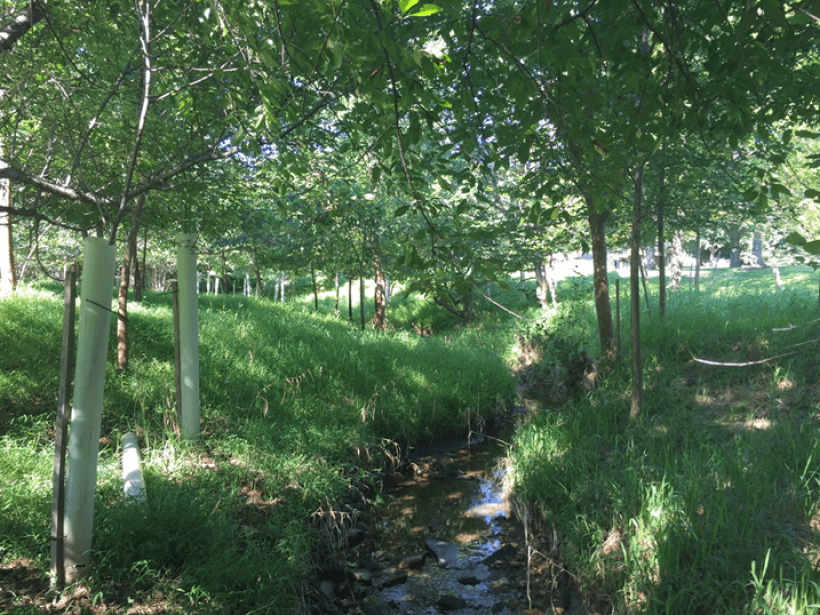
The Brandywine Conservancy, in partnership with Natural Lands, is now assessing municipal ordinances for provisions promoting the use of green stormwater infrastructure (GSI) by new development within the Brandywine/Christina Watershed. The use of such infrastructure in residential and non-residential developments helps to minimize stormwater runoff by reducing impervious (e.g. paved) surfaces, improve the quality of stormwater runoff that is recharged or leaving the site, and encourage infiltration of stormwater runoff into the ground. Examples of GSI include, but are not limited to, rain gardens, grassed swales, reduced pavement widths for local streets, vegetated islands within cul-de-sac bulbs, rain barrels, and use of conservation design principles that maximize open space and protection of natural resources through careful layout of buildable areas during subdivision design.
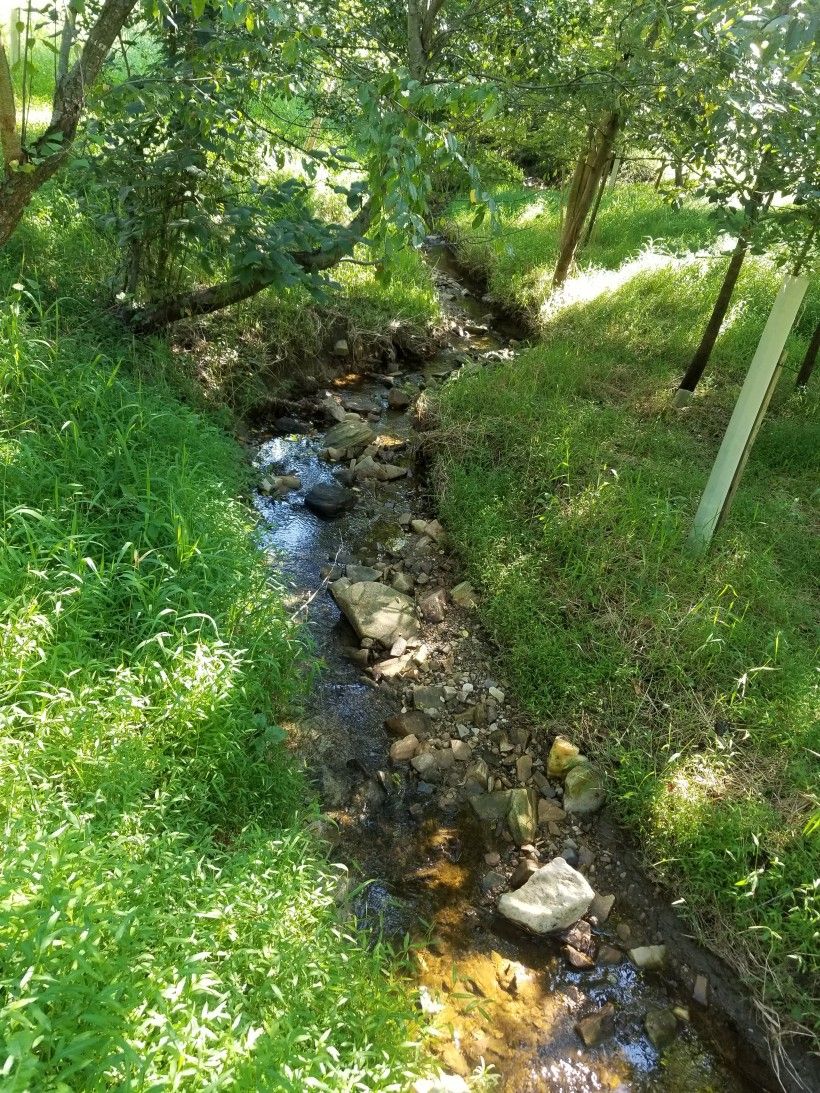
The main goals of the municipal assessments for green infrastructure provisions are to:
- Determine the extent to which GSI practices are promoted or required as part of a municipality’s land use approval procedures;
- Note differences between rural, suburban and urban municipalities with regard to GSI inventory and requirements;
- Share general findings of these GSI assessments with municipalities within the Brandywine-Christina watershed.
This assessment is part of work being done by the Brandywine-Christina Watershed Partners—a collaborative team of land trusts, other non-profits and institutions, including the Brandywine Conservancy and Natural Lands—which is funded by the William Penn Foundation’s Delaware River Watershed Initiative (DRWI). As part of the DRWI, the Partners are tasked with leading one of eight targeted areas across four states to protect and restore the Delaware River and its tributaries.
Upon completion of the assessments and presentation of findings, municipalities interested in adding or enhancing existing GSI practices will have an opportunity to obtain technical assistance from the Conservancy and Natural Lands, funded through the William Penn Foundation’s grant. These municipal GSI assessments are now underway. A workshop will be scheduled in spring 2019 to present findings to attending municipalities and determine interest in technical assistance. Questions regarding this municipal ordinance assessment effort can be directed to John Theilacker, Associate Director for Municipal Assistance.
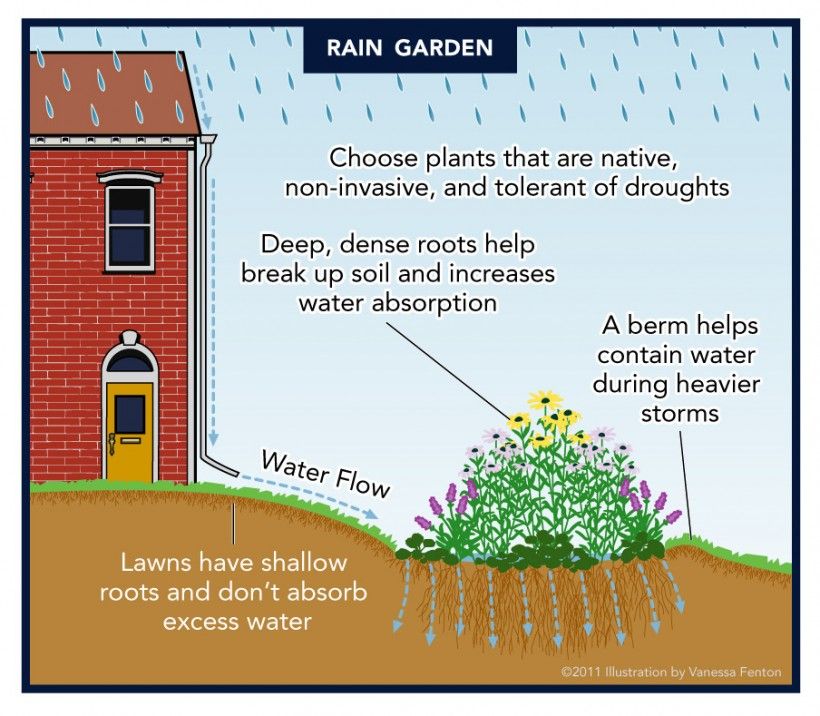
GOOD NEWS on the invasive insect front!
It’s not all bad news out there. Here are two very recent positive reports on biological control of invasive insects.
Emerald Ash Borer
Researchers have successfully tested four species of wasps that parasitize the Emerald Ash Borer (EAB). These wasps have now been approved for release as biological controls of the EAB in all states where EAB has been found. And in Michigan the EAB population has crashed while ash tree seedlings and saplings are increasing. There is cause for optimism that American ash trees may rebound from disaster to some extent, although much remains to be seen, including whether the parasitoids will establish a viable population.
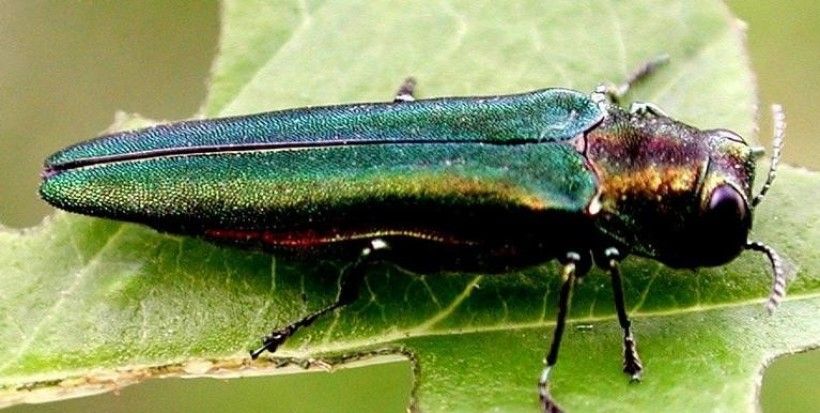
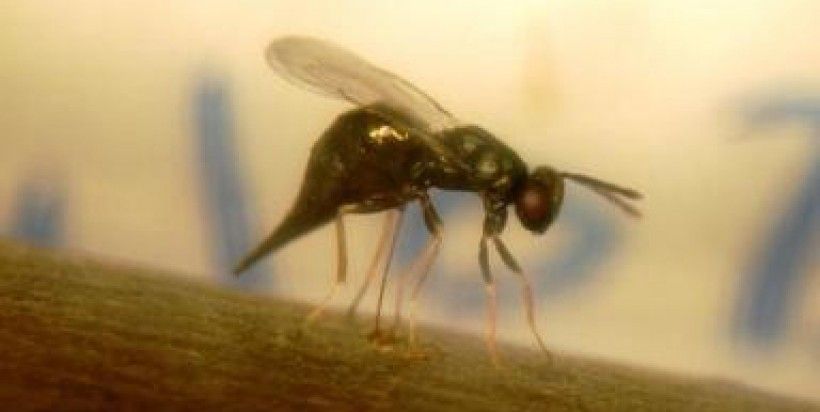
This is all the more reason to preventively treat your ash trees (emamectin benzoate is preferred). Save trees to provide a seed source, and so that EAB-resistant genes may be retained and studied (unlike American chestnut trees, which were extirpated before genetic resistance could be understood). For more information see the USDA’s EAB biocontrol guidelines and USDA’s EAB information site.
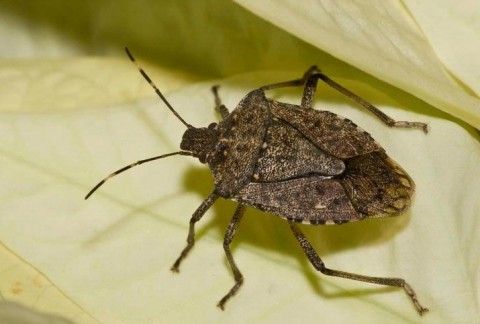
Brown Marmorated Stinkbug
If you think you’ve been seeing many fewer of these home invaders, you’re not mistaken. Researchers have documented a Brown Marmorated Stinkbug (BMSB) population crash in Maryland, the result of a combination of predation (probably by non-native praying mantids and other “beneficial” insects), and the inadvertent introduction of the samurai wasp (Trissolcus japonicus), which parasitizes stinkbug eggs. The wasp has now been identified in 10 states. If the samurai wasp continues to spread, the BMSB population could stabilize at a tolerable level. BMSB is a threat to many crops, so this is good news for homeowners, gardeners and farmers.
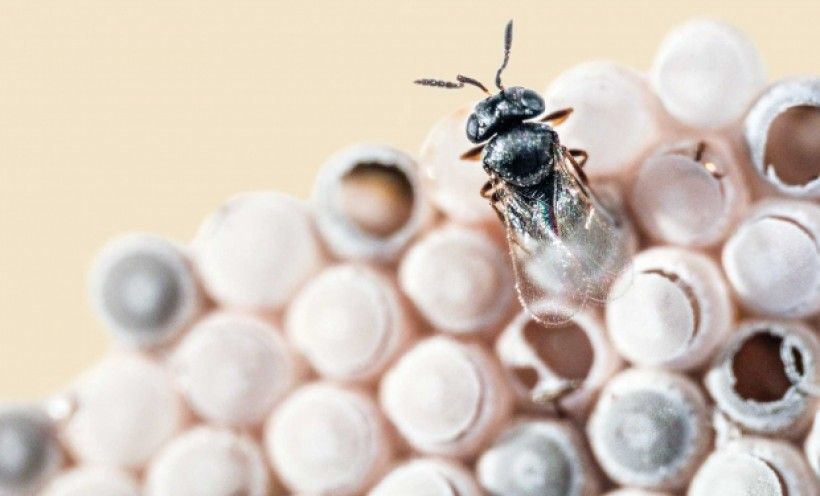
Roosting Boxes for Winter Backyard Birds
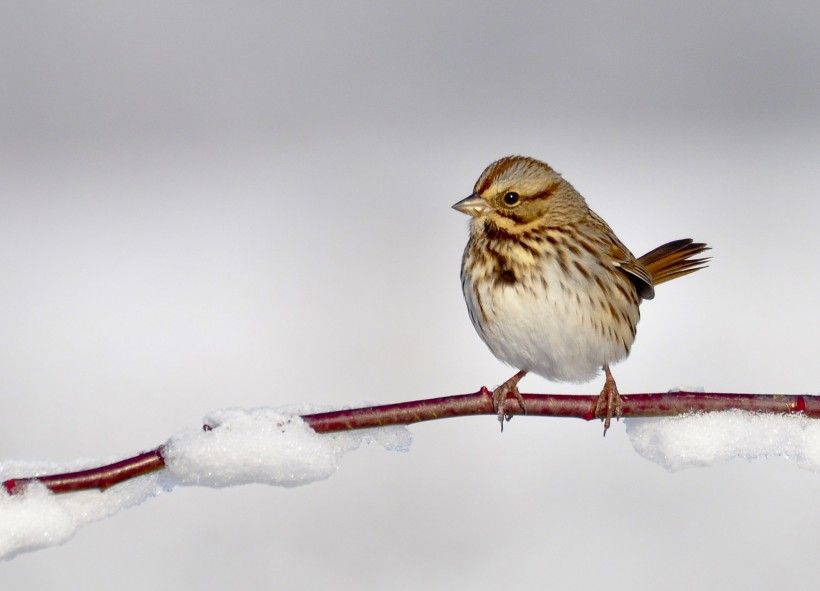
Without the constant need to mow and trim in the winter, landowners may find themselves with extra time on their hands. One project to tackle during this down time is inspecting and repairing your current nest boxes, as well as constructing and installing winter roost boxes.
In the winter, birds seek protected places to roost or sleep. Many of the same birds that use nest boxes in the spring and summer can benefit from winter roost boxes as well. Unfortunately, some of the features that make nest boxes function so well during spring and summer make them less than ideal for winter roosting sites.
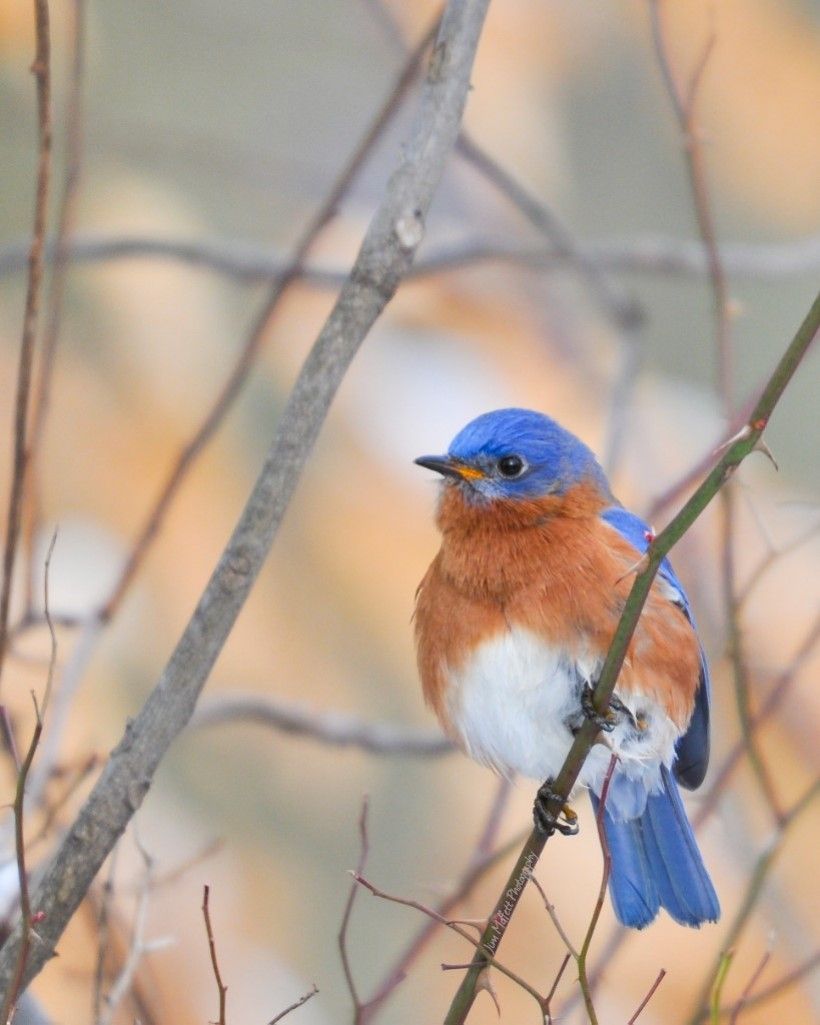
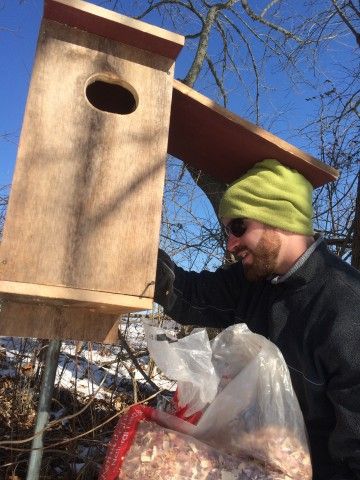
One difference between nest boxes and winter roost boxes is the location of the entrance hole. In a nest box, the entrance is in the middle or towards the top, while in a roost box, it is typically at the bottom. Since heat rises, a low entrance hole prevents the birds’ body heat from leaking out of the hole. For this same reason, a roost box is usually sealed at the top to keep the heat inside, while nest boxes regularly have ventilation under the eaves of the house to provide oxygen to the chicks and to keep the box from overheating. Another key difference between the nest box and roost box is an interior perch that provides birds space to share the house without causing smothering for the unlucky bird at the bottom. Nest boxes do not typically contain interior perches, in order to allow space for hatchlings as they grow.
There are some other subtle differences between roost boxes and nest boxes. For example, roost boxes should have thicker walls to provide better insulation and larger dimensions to accommodate multiple adult birds comfortably.
As with nest boxes, it is important to protect roost boxes from predators. It is best to mount them on metal poles that are 10 feet high or more in the winter. Predator shields can be purchased or constructed to prevent determined animals from climbing up and grabbing a roosting bird. The boxes should also be placed in a sheltered spot, out of prevailing winds. Facing the boxes towards the south will allow them to receive the most warmth from the winter sun.
Landowners can buy prefabricated roost boxes or try building them by hand. The Washington Department of Fish & Wildlife contains a plan for constructing a roost box for songbirds, which can be found here. “Woodcrafting for Wildlife,” from the PA Game Commission and the PA Wild Resource Conservation Fund, contains plans for constructing wildlife boxes for birds as well as for other animals here.
Southern Pine Beetle: an emerging threat to pines?
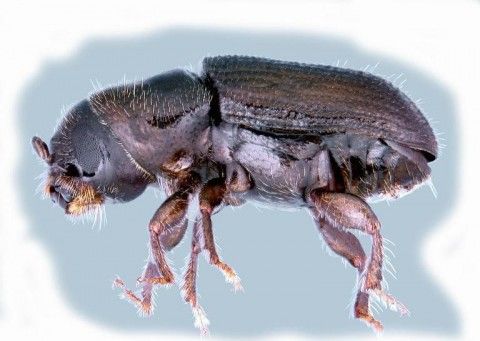
The southern pine beetle’s (SPB) diminutive size belies the lethal impact embodied in its scientific name: Dendroctonus (“Tree-killer”) frontalis. It is “the most destructive pest of pine in the southern United States.”
The SPB is heading north, expanding its native range as our climate warms. The historical range of the SPB includes northern Delaware and extreme southern Pennsylvania, as well as southern New Jersey. Cold winter temperatures kill off the beetles, but as average temperatures rise, the beetle has been wreaking havoc farther north, reaching the New Jersey Pinelands, Long Island and as far north as upstate New York and New England.
In 2017 a SPB infestation caused the death of 400 acres of pitch pines in Nottingham County Park, in southern Chester County. Subsequently SPBs infested trees at nearby Goat Hill and were even observed in northern Chester County in French Creek State Park. While not what we usually classify as an “invasive” species (exotic plants or animals imported far from their native range), the southern pine beetle’s increasing threat to our pine woods makes it worth our attention. Click here to read more.
Protecting and Restoring the Brandywine at its Source – An Update
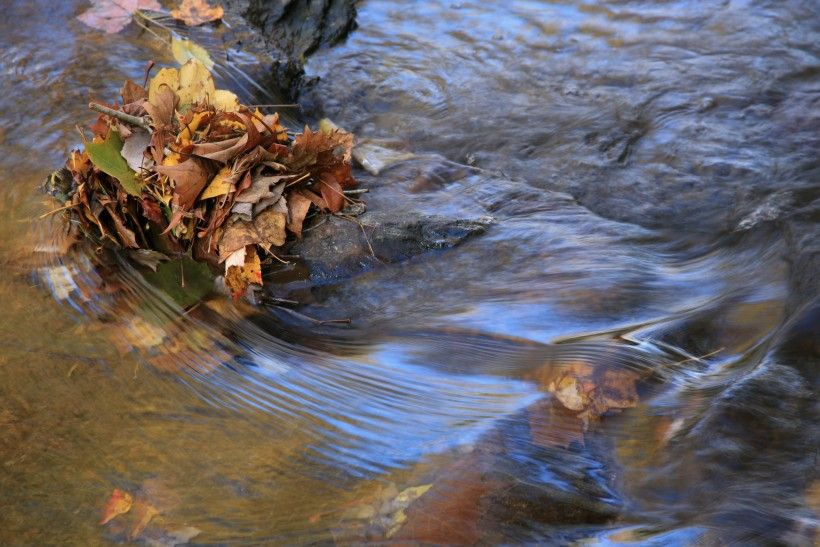
Water quality in the Brandywine Headwaters continues to be a priority and an on-going cross-departmental effort at the Brandywine Conservancy. Taking a holistic approach and working in partnership with the Brandywine Red Clay Alliance, Natural Lands and the Stroud Water Research Center, the Conservancy staff have been busy working with landowners and municipalities to implement a full suite of direct and indirect land use protection and regulatory measures. In this largely Plain Sect farming community, staff deal directly with the farmers to permanently conserve their land with agricultural and conservation easements and help minimize polluting agricultural runoff through the implementation of Best Management Practices (BMPs). The Conservancy guided both Honey Brook Township and Honey Brook Borough through development of a multi-municipal Comprehensive Plan and complementary zoning ordinances to help implement the plan. Staff also provided technical assistance to the township and borough throughout the planning, development and submission to the PA Department of Environmental Protection (PADEP) of a joint Pollution Reduction Plan to address stormwater runoff. The Township Board of Supervisors will soon vote to adopt a 2018 Land Preservation Plan Update drafted by the Conservancy.
In 2018, the Conservancy joined with Honey Brook Township and Chester County to conserve three more Amish-owned farms totaling 226.5 acres. The three farms together have over 4,870 feet of frontage on the main stem of the West Branch of the Brandywine and its tributaries. The easements’ combined cost exceeded $1.15 million, with the Brandywine Conservancy and Honey Brook Township each contributing 22.5% and Chester County paying 55%.
In total, there are 74 separate properties permanently conserved in the township, totaling 5,031 acres or 31% of the township. Based on published records, over $24 million has been spent protecting land in the township since 1993. Nearly half that amount was spent in just the past six years, during which time the amount of permanently protected land in the township nearly doubled.
Concurrently there has been increased investment in installing agricultural BMPs devoted to controlling stormwater runoff, minimizing soil loss and managing nutrients in what is predominately a dairy farming community. Most of the farms in the township have up-to-date farm conservation plans and are following them. New manure storage pits have been built, miles of streambank fencing have been installed, and many dozens of acres of stream-side buffers have been reforested—along with a host of other practices. The use of cover crops is also now common. Overall, nearly 30 farms have implemented hundreds of BMPs in the last few years and more farmers are seeking the Conservancy’s help to install their own BMPs.
The goal of this work is to protect and improve the water quality of the Brandywine. In order to monitor the progress, in 2014 the Stroud Water Research Center established four stream monitoring sites at key points along the two largest branches of the Brandywine flowing through the township. Stroud scientists, as well as scientists from the Academy of Natural Sciences of Drexel University, conduct two annual visits to these sites to sample the aquatic life (fish and macro-invertebrates), which are indicators of water quality. They also measure sediment and salt content in the water as well as nutrients such as nitrogen and phosphorus. Results have yet to show any changes to water quality, but that is to be expected given that the work is in the early years and change takes time.
Our work in the Brandywine Headwaters since 2013, has largely been funded with a grant from the William Penn Foundation under its Delaware River Watershed Initiative and its partners the Open Space Institute and the National Fish and Wildlife Foundation (NFWF). But many other private funders have provided essential support, including the Mt. Cuba Center, Kleberg Foundation, Laffey-McHugh Foundation, Marmot Foundation, Borkey-Hagley Foundation, Monomoy Foundation, Park Foundation, Pentair Foundation, Tech Foundation, and Sproul Foundation. Additional funds have been provided by PA Department of Environmental Protection, PA Department of Conservation and Natural Resources, USDA’s Natural Resource Conservation Service (NRCS), PennVest, the Chester County Board of Commissioners, Honey Brook Township, Honey Brook Borough, and the City of Wilmington, Delaware.
Trail Creek Challenge Success
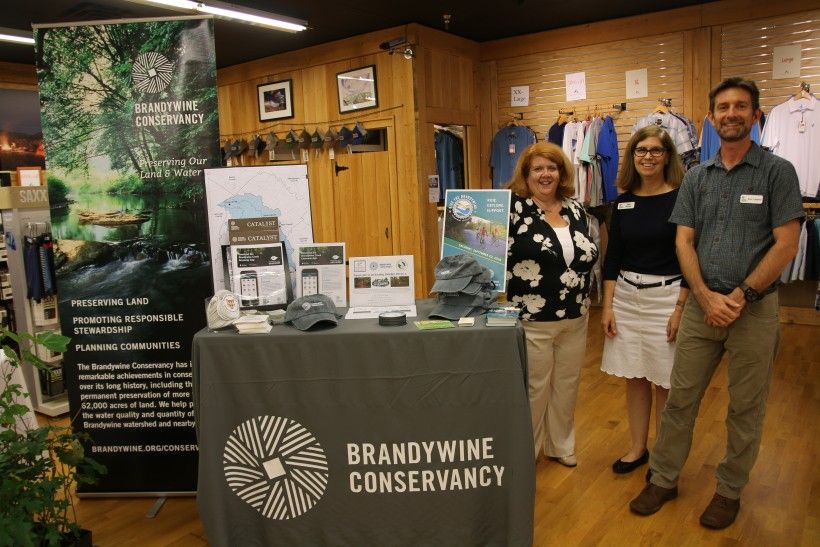
This fall the Brandywine Conservancy was the proud recipient of a $4,800 donation from Trail Creek Outfitters to be put towards the Brandywine Water Trail project. As part of its "Brands that Give Back" initiative, Trail Creek raised $12,000 to invest in three local non-profits: Brandywine Conservancy, Natural Lands and Stroud Water Research Center. The distribution of funds for each non-profit was decided by Trail Creek customers who voted for their favorite project to support during the month of September. The Conservancy and its Brandywine Water Trail project was the winner of all four voting weeks! Once complete, the trail will be a 22-mile bi-state recreational water route that connects communities and will improve access to the Brandywine. Learn more here.
What's up at our newest preserve: Penguin Court and Thomas Road Farm
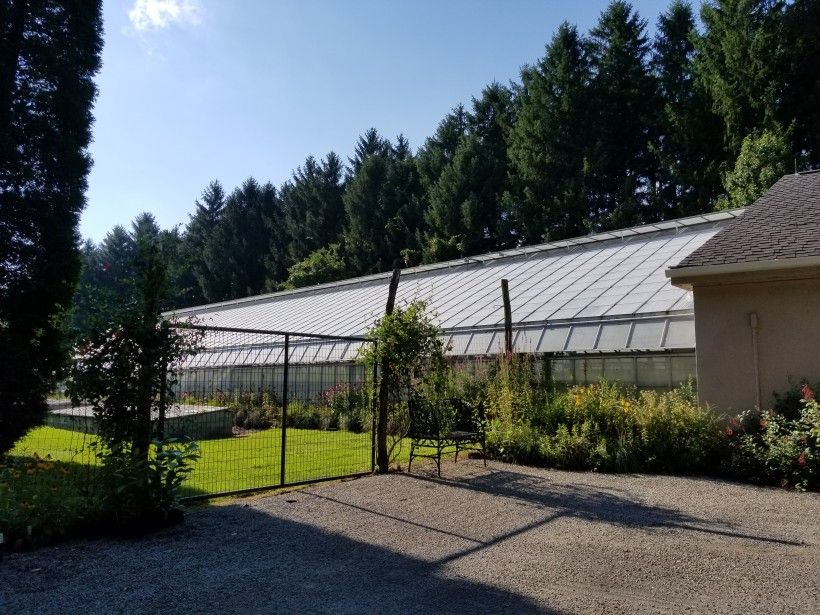
The Brandywine Conservancy’s Penguin Court and Thomas Road Farm, located in the beautiful Laurel Highlands of Western Pennsylvania, comprise a stunning preserve. Bequeathed to the Brandywine in 2015 by Mr. Richard M. Scaife, these properties total 1,089 acres of forests, meadows and open space, along with a spring-fed reservoir and pond, a 7,000 square-foot conservatory, and a 3,700 square-foot greenhouse in Westmoreland County. Named for the 10 penguins that lived on this former family estate, Penguin Court seeks to protect and manage the land, water, cultural and natural resources of this preserve to advance education, research and community engagement.
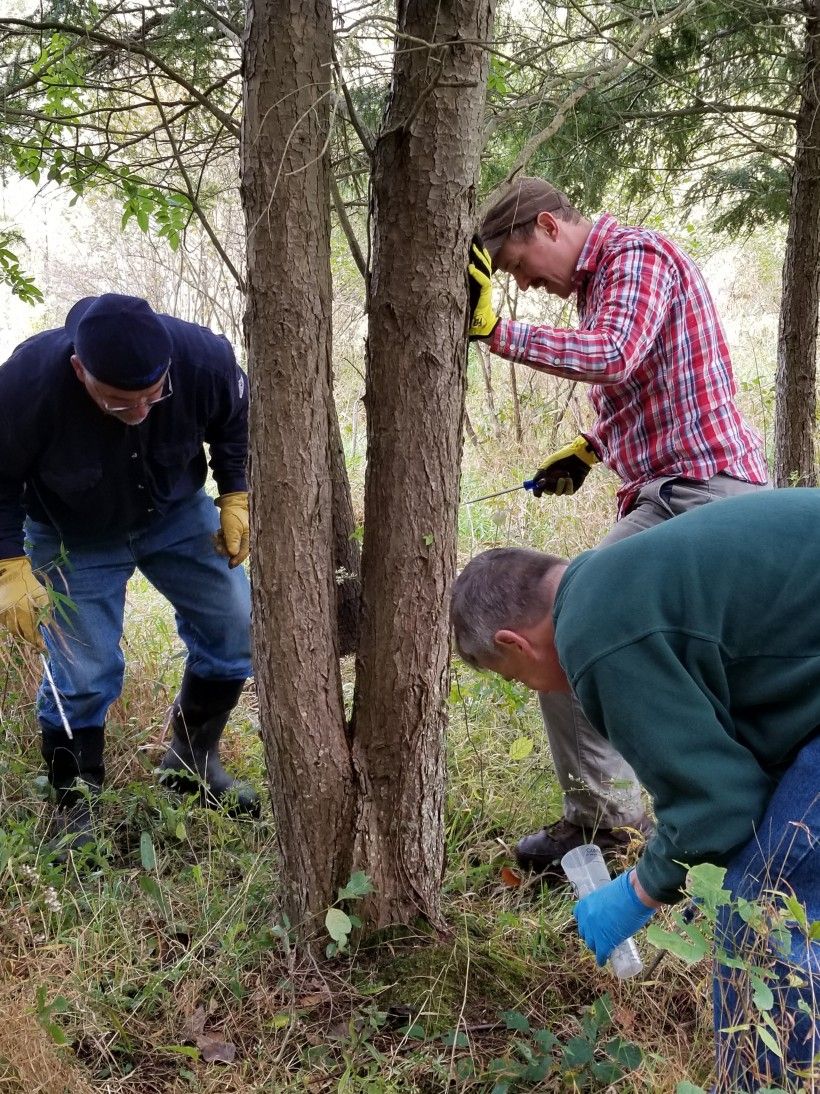
Penguin Court staff include Dave Warren, who serves as the Property Manager, Kevin Guerrier, the Horticultural Manager, Graham Fitchko, Land Steward, and Melissa Reckner, Program Manager. Both Dave and Kevin have worked on the property since the early 1990s, while Graham has been on staff since 2016. Penguin Court and Thomas Road Farm are managed for their conservation and historical value, and the greenhouse and adjacent garden are used to grow native plant species for the Brandywine Conservancy & Museum of Art and other partner organizations.
Melissa joined the Brandywine in August 2018 to develop and implement programming that utilizes the grounds for community good. She will also be active throughout the Laurel Highlands, coordinating nine Trout in the Classroom projects with local schools, serving as the Secretary of the Stonycreek-Conemaugh River Improvement Project, and collaborating with numerous partners for education and outreach activities. Additionally, the Penguin Court and Thomas Road Farm Preserve may be used for student or professional research purposes. Already, members of the Pennsylvania Amphibian and Reptile Survey have been to Penguin Court to document herps inhabiting this preserve as part of its work to determine the extent and status of herps across the Commonwealth.
Penguin Court is one of seven organizations involved in the Southern Laurel Highlands Invasive Plant and Pest Management Partnership (SLHPPMP). This partnership seeks to control invasive species, while promoting and enhancing native plants and pollinators. As an example, in October, partnership members and Chevron employees worked to protect 58 eastern hemlock trees at Penguin Court from the woolly hemlock adelgid, an aphid-like insect native to Asia that feeds on a hemlock’s sap and ultimately kills the tree, by inserting CoreTect tablets (an insecticide) into the ground at the base of the hemlocks. The partnership coordinates similar work days at member properties, provides education, and organizes plant sales to promote the use of native plant species.
Stay tuned for more updates and happenings at this preserve!
Third Annual Bike the Brandywine a Sunny Success
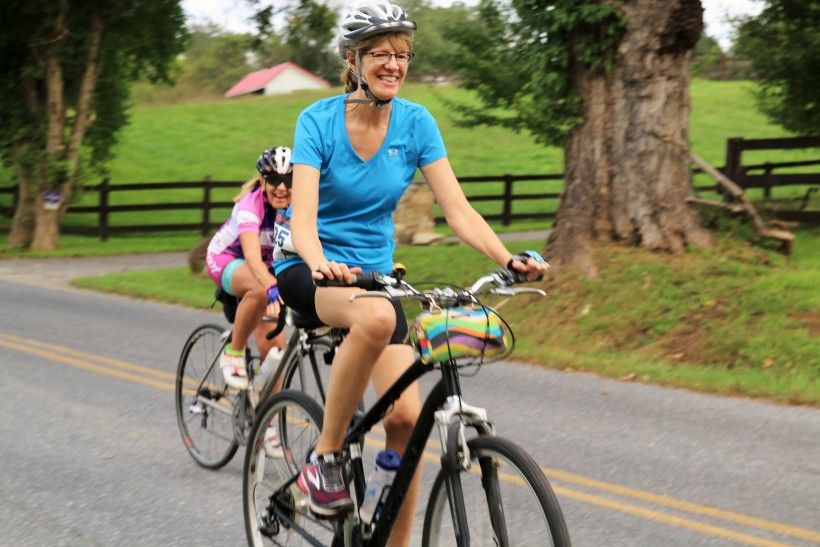
Greeted with sunny skies and crisp fall weather, nearly 500 cyclists joined the Brandywine Conservancy’s third annual Bike the Brandywine event on Saturday, September 22, 2018. Featuring routes of 25, 45 and 80 miles along the Brandywine Creek Greenway, Bike the Brandywine took riders along a scenic journey with stunning views of rural landscapes, rich history and active farmland—much of which the Brandywine Conservancy has helped permanently protect and conserve for future generations. All three routes concluded at the Chadds Ford Historical Society as cyclists were welcomed back to the sounds of cheers and cowbells, as well as celebratory drinks from Victory Brewing Company and a complimentary lunch.
“Bike the Brandywine is a fun way for cyclists to enjoy the scenic beauty of the Brandywine Valley and to get a sense of our decades-long efforts to conserve and protect the land, the river and the historic sites of this area,” said Ellen Ferretti, director of the Brandywine Conservancy. “Thanks to the generous support of the William Penn Foundation and our many sponsors, as well as our incredible staff and volunteers, we were grateful for another successful year.”
“After months of preparation and planning for the ride, nothing is better than seeing all of our work come to fruition with almost 500 cyclists enjoying a beautiful ride through some amazing countryside," said Susan McCreadie, Brandywine’s coordinator of volunteers and events.

Each route began and ended at the Chadds Ford Historical Society, with options for both the recreational and more seasoned cyclist. Following both the east and west branches of the historic Brandywine River, the 80-mile loop guided riders from Chadds Ford all the way to the river’s headwaters in bucolic Honey Brook Township. Cyclists on the 45-mile loop followed the west branch of the river through the magnificent King Ranch area in Unionville before winding past the historic village of Marshallton. Closely mirroring the early routes of both the 80- and 45-mile options, the 25-mile loop followed the west branch of the river through open farmland and scenic river valleys, providing a trip through the historic village of Marshallton and its neighboring equestrian and farming landscapes.
“Bike the Brandywine offered riders a taste of the Brandywine Creek Greenway and the beautiful surrounding countryside,” said Sheila Fleming, manager for municipal assistance at the Brandywine Conservancy. “It’s a wonderful opportunity to support the Conservancy and highlight the Greenway, especially as we continue to work with our partners and municipalities to expand and enhance it for all communities to enjoy.”
The Brandywine Creek Greenway is a regional planning initiative of the Brandywine Conservancy—and 26 municipal partners in Chester and Delaware counties—to create a 30-mile conservation and recreation corridor along both branches of the Brandywine. It stretches from the Delaware state line just south of Chadds Ford to the Pennsylvania Highlands Mega-Greenway at the northern border of Honey Brook Township. The Brandywine River and its network of parks and trails form the western limit of The Circuit, a regional trail network of the greater Philadelphia region. The vision of the Brandywine Creek Greenway is to build healthier, more sustainable communities, by emphasizing the natural and cultural resources of the area; preserving and protecting the Brandywine River; and creating connections among open space, parks, river access points and area attractions. To learn more, visit www.brandywinegreenway.org
Bike the Brandywine was generously sponsored by the William Penn Foundation, Willowdale Town Center, Victory Brewing Company, L.L.Bean, Chadds Ford Historical Society, Western Chester County Chamber of Commerce, Main Line Health Fitness & Wellness Center, Trek Bicycle, For Fox Sake and The Whip Tavern, Highland Orchards, Starbucks and Herr Foods.
Save the Date for Bike the Brandywine 2019!
